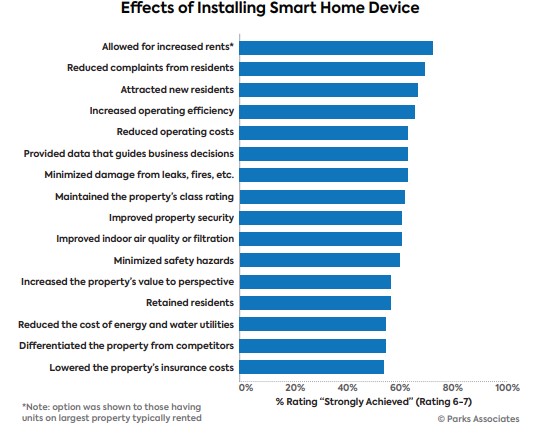- Research
- Research Memberships
- Smart Home
- Visibility Memberships
- Consumer Electronics and Entertainment
- Consulting
- Broadband and Mobility
- Primary Research
- Connected Health and Wellness
- MDU / Multifamily
- SMB
- Events
- Event
- Company
- About Parks Associates
- Consumer Electronics and Entertainment
- Consumer Electronics Devices
- Video Services: OTT, Pay TV
- Entertainment Content: Video, Audio, Gaming
-
Research
Smart Home
Smart Home Devices, Automation, Controls
Energy Management
Residential Security
Consumer Electronics and Entertainment
Consumer Electronics Devices
Video Services: OTT, Pay TV
Entertainment Content: Video, Audio, Gaming
Broadband and Mobility
Mobility
Wi-Fi and Home Networking
Support Services
Connected Health and Wellness
Wellness and Fitness
Independent Living
Telehealth
- Events
- White Papers
- Newsroom
- Company
- Consulting
- Contact Us

 Additionally, Parks Associates research reveals that 34% of U.S. broadband households are MDU residents. MDU categories consist of apartments, condominiums, duplexes, quadruplexes, townhomes and dormitories.
Additionally, Parks Associates research reveals that 34% of U.S. broadband households are MDU residents. MDU categories consist of apartments, condominiums, duplexes, quadruplexes, townhomes and dormitories.
